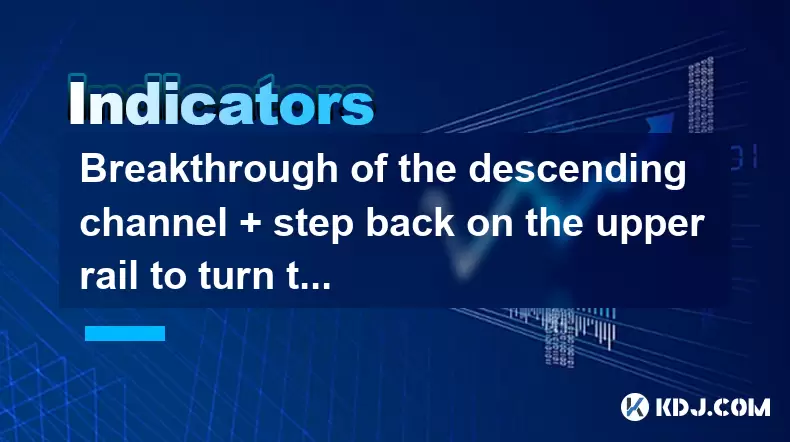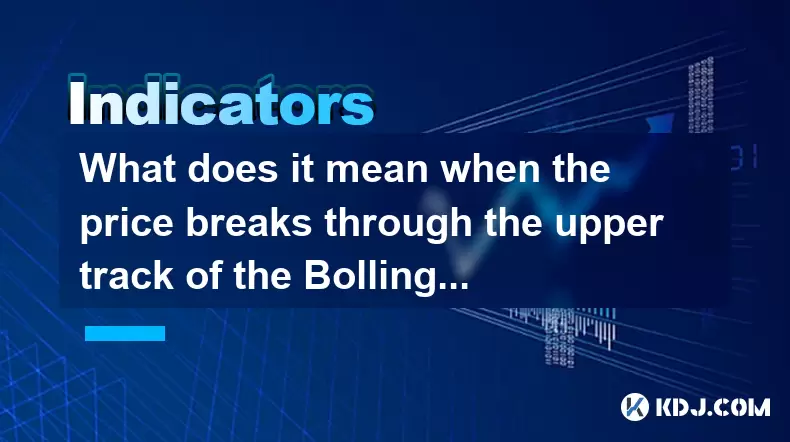-
 Bitcoin
Bitcoin $117500
-0.66% -
 Ethereum
Ethereum $3760
-1.24% -
 XRP
XRP $3.087
-2.54% -
 Tether USDt
Tether USDt $0.9999
-0.01% -
 BNB
BNB $803.6
-4.03% -
 Solana
Solana $180.3
-4.15% -
 USDC
USDC $0.9998
-0.01% -
 Dogecoin
Dogecoin $0.2218
-4.92% -
 TRON
TRON $0.3366
3.71% -
 Cardano
Cardano $0.7785
-3.73% -
 Hyperliquid
Hyperliquid $42.90
-4.75% -
 Sui
Sui $3.797
-7.45% -
 Stellar
Stellar $0.4165
-2.32% -
 Chainlink
Chainlink $17.65
-4.17% -
 Bitcoin Cash
Bitcoin Cash $561.0
-3.86% -
 Hedera
Hedera $0.2611
-4.54% -
 Avalanche
Avalanche $24.33
-7.02% -
 UNUS SED LEO
UNUS SED LEO $8.972
0.06% -
 Litecoin
Litecoin $107.6
-2.79% -
 Toncoin
Toncoin $3.254
-1.84% -
 Shiba Inu
Shiba Inu $0.00001306
-4.69% -
 Ethena USDe
Ethena USDe $1.001
0.00% -
 Uniswap
Uniswap $10.10
-4.83% -
 Polkadot
Polkadot $3.902
-4.63% -
 Monero
Monero $315.1
-2.57% -
 Dai
Dai $1.000
0.02% -
 Bitget Token
Bitget Token $4.499
-2.53% -
 Pepe
Pepe $0.00001145
-7.38% -
 Cronos
Cronos $0.1479
6.07% -
 Aave
Aave $281.3
-4.07%
Breakthrough of the descending channel + step back on the upper rail to turn to support buying point
A descending channel breakout with volume and a retest of the upper rail as support offers a high-probability long entry in crypto trading.
Jul 29, 2025 at 04:08 am

Understanding the Descending Channel in Cryptocurrency Trading
A descending channel is a technical analysis pattern commonly observed in cryptocurrency price charts. It consists of two parallel trendlines: the upper trendline connects a series of lower highs, while the lower trendline connects a series of lower lows. This formation indicates a bearish trend where price momentum is gradually declining. Traders watch for a breakthrough of the descending channel as a potential signal that the downtrend may be losing strength. When the price closes above the upper trendline with strong volume, it suggests a shift in market sentiment. This breakout often reflects increased buying pressure overpowering the previous selling dominance. The validity of the breakout is confirmed when subsequent candles hold above the upper rail without immediate re-entry into the channel.
Confirming the Breakout: Volume and Candlestick Patterns
To validate a breakthrough of the descending channel, traders must analyze accompanying volume and candlestick formations. A genuine breakout is typically accompanied by a noticeable spike in trading volume. Low volume during the breakout may indicate a false move or a trap set by larger market participants. Watch for bullish candlestick patterns such as a bullish engulfing, hammer, or piercing line forming at the point of breakout. These patterns reinforce the idea of buyer dominance. It is crucial to wait for the candle to close above the upper trendline to avoid premature entries based on intraday fluctuations. Using a 4-hour or daily timeframe enhances the reliability of the signal, reducing noise common in lower timeframes.
Step Back to the Upper Rail as Support
After a confirmed breakout, the price often steps back to retest the upper rail of the descending channel. This retest transforms the former resistance into new support. The psychological shift occurs because traders who previously sold at that level now perceive it as a value zone. The retest provides a second opportunity to enter long positions with reduced risk. For the retest to be valid, the price should approach the upper trendline without aggressively breaking below it. A shallow pullback followed by a bounce indicates strong bullish conviction. Traders should look for tight price action near the trendline and avoid entering if the price slices through it with strong bearish momentum.
Executing the Support Buying Point Strategy
To execute the support buying point strategy after a descending channel breakout, follow these steps:
- Identify the descending channel using at least two confirmed lower highs and two lower lows.
- Wait for a daily or 4-hour candle to close decisively above the upper trendline.
- Confirm the breakout with increased trading volume and bullish candlestick patterns.
- Monitor for a pullback toward the former upper trendline.
- As the price approaches the retested level, observe for signs of rejection, such as wicks to the downside or consolidation.
- Enter a long position when price shows reversal signals like a bullish engulfing or pin bar at the support zone.
- Place a stop-loss just below the retested trendline to manage risk.
- Set a take-profit target based on measured moves or previous resistance levels.
Using tight stop-loss placement minimizes exposure in case the retest fails. Position sizing should align with risk tolerance, typically risking no more than 1% to 2% of trading capital per trade.
Using Indicators to Strengthen the Signal
Supplementing price action with technical indicators improves the accuracy of the support buying point setup. The Relative Strength Index (RSI) can confirm momentum shifts. An RSI rising above 50 after being below it supports bullish momentum. Divergence—where price makes a lower low but RSI makes a higher low—can signal weakening bearish pressure before the breakout. The Moving Average Convergence Divergence (MACD) is useful for detecting changes in momentum. A MACD line crossing above the signal line during or after the breakout adds confirmation. Additionally, plotting a 20-period or 50-period Exponential Moving Average (EMA) can help identify dynamic support during the retest phase. If the price bounces off the EMA near the retested trendline, it strengthens the entry signal.
Risk Management and Trade Psychology
Even with a well-structured setup, risk management remains essential. The possibility of a false breakout or failed retest always exists. Traders must avoid emotional attachment to a trade and adhere strictly to the plan. Avoid averaging down on losing positions in anticipation of a reversal. Instead, accept small losses as part of the process. Position size should be adjusted based on the distance to the stop-loss; wider stops require smaller position sizes to maintain consistent risk. Keeping a trading journal to record entries, exits, and reasoning helps refine the strategy over time. Discipline in following the rules prevents impulsive decisions driven by fear or greed.
Frequently Asked Questions
How do I distinguish a valid retest from a breakdown?
A valid retest involves the price touching or slightly piercing the former upper trendline before reversing upward with bullish momentum. Look for rejection candles like hammers or bullish engulfing patterns. A breakdown occurs when the price closes significantly below the trendline with strong bearish volume and does not recover in the next few candles.
Can this strategy be applied to all cryptocurrencies?
Yes, the descending channel breakout and retest strategy applies to most liquid cryptocurrencies such as Bitcoin (BTC), Ethereum (ETH), and major altcoins. However, low-volume or illiquid tokens may exhibit erratic price action, making the pattern less reliable. Always verify sufficient trading volume and exchange credibility.
What timeframe is best for identifying this setup?
The daily timeframe offers the most reliable signals due to reduced noise and stronger institutional participation. The 4-hour chart can be used for earlier entries, but it requires stricter confirmation due to increased volatility. Avoid using timeframes below 1-hour for this strategy.
Should I use leverage when trading this pattern?
Leverage amplifies both gains and losses. Given the risk of false breakouts and volatile crypto markets, it is advisable to trade this setup with minimal or no leverage, especially for beginners. If using leverage, keep it below 3x and ensure your stop-loss is tightly defined to prevent liquidation.
Disclaimer:info@kdj.com
The information provided is not trading advice. kdj.com does not assume any responsibility for any investments made based on the information provided in this article. Cryptocurrencies are highly volatile and it is highly recommended that you invest with caution after thorough research!
If you believe that the content used on this website infringes your copyright, please contact us immediately (info@kdj.com) and we will delete it promptly.
- Bitcoin Price Drop: Navigating the Dip with Corporate Strategies
- 2025-07-30 07:30:12
- BNB's Bullish Cycle: ChatGPT Weighs In on the Future
- 2025-07-30 06:50:12
- XRP's Wild Ride: Open Interest, Price Crash Fears, and What's Next
- 2025-07-30 07:50:12
- SEC Greenlights In-Kind Creations: A Game Changer for Bitcoin ETPs?
- 2025-07-30 07:50:12
- Arbitrum (ARB) Price Prediction: Navigating the Ups and Downs of the Best ETH Eco
- 2025-07-30 06:50:12
- Ethereum, Ruvi AI, Presale: The Next Big Thing in Crypto?
- 2025-07-30 07:30:12
Related knowledge

What does it mean when the EMA combination crosses upward for the first time after sideways trading?
Jul 28,2025 at 03:43pm
Understanding the EMA and Its Role in Technical AnalysisThe Exponential Moving Average (EMA) is a widely used technical indicator in cryptocurrency tr...

What does it mean when the price breaks through the upper track of the Bollinger Band but the RSI is overbought?
Jul 30,2025 at 03:35am
Understanding Bollinger Bands and Their Upper TrackBollinger Bands are a widely used technical analysis tool developed by John Bollinger. They consist...

What signal does the ROC send when it rises rapidly from a low level and breaks through the zero axis?
Jul 27,2025 at 10:15am
Understanding the Rate of Change (ROC) IndicatorThe Rate of Change (ROC) is a momentum-based oscillator used in technical analysis to measure the perc...

What does it mean when the moving averages are glued together and a gap appears?
Jul 29,2025 at 07:49pm
Understanding Moving Averages in Cryptocurrency TradingMoving averages are among the most widely used technical indicators in the cryptocurrency tradi...

What does it mean when TEMA breaks through the long-term downward trend line?
Jul 29,2025 at 02:50pm
Understanding the Role of Smart Contracts in Decentralized Finance (DeFi)Smart contracts are self-executing agreements with the terms of the agreement...

What does it mean when the price breaks through the double bottom neckline and the moving averages are arranged in a bullish pattern?
Jul 28,2025 at 10:57am
Understanding the Double Bottom PatternThe double bottom is a widely recognized reversal chart pattern in technical analysis, particularly within the ...

What does it mean when the EMA combination crosses upward for the first time after sideways trading?
Jul 28,2025 at 03:43pm
Understanding the EMA and Its Role in Technical AnalysisThe Exponential Moving Average (EMA) is a widely used technical indicator in cryptocurrency tr...

What does it mean when the price breaks through the upper track of the Bollinger Band but the RSI is overbought?
Jul 30,2025 at 03:35am
Understanding Bollinger Bands and Their Upper TrackBollinger Bands are a widely used technical analysis tool developed by John Bollinger. They consist...

What signal does the ROC send when it rises rapidly from a low level and breaks through the zero axis?
Jul 27,2025 at 10:15am
Understanding the Rate of Change (ROC) IndicatorThe Rate of Change (ROC) is a momentum-based oscillator used in technical analysis to measure the perc...

What does it mean when the moving averages are glued together and a gap appears?
Jul 29,2025 at 07:49pm
Understanding Moving Averages in Cryptocurrency TradingMoving averages are among the most widely used technical indicators in the cryptocurrency tradi...

What does it mean when TEMA breaks through the long-term downward trend line?
Jul 29,2025 at 02:50pm
Understanding the Role of Smart Contracts in Decentralized Finance (DeFi)Smart contracts are self-executing agreements with the terms of the agreement...

What does it mean when the price breaks through the double bottom neckline and the moving averages are arranged in a bullish pattern?
Jul 28,2025 at 10:57am
Understanding the Double Bottom PatternThe double bottom is a widely recognized reversal chart pattern in technical analysis, particularly within the ...
See all articles

























































































